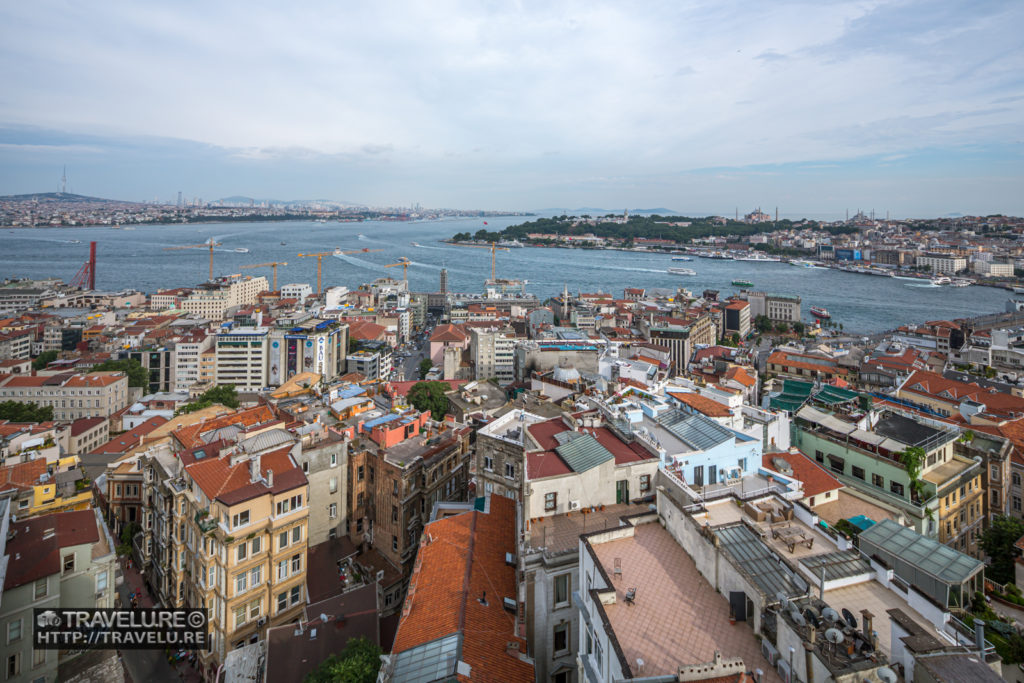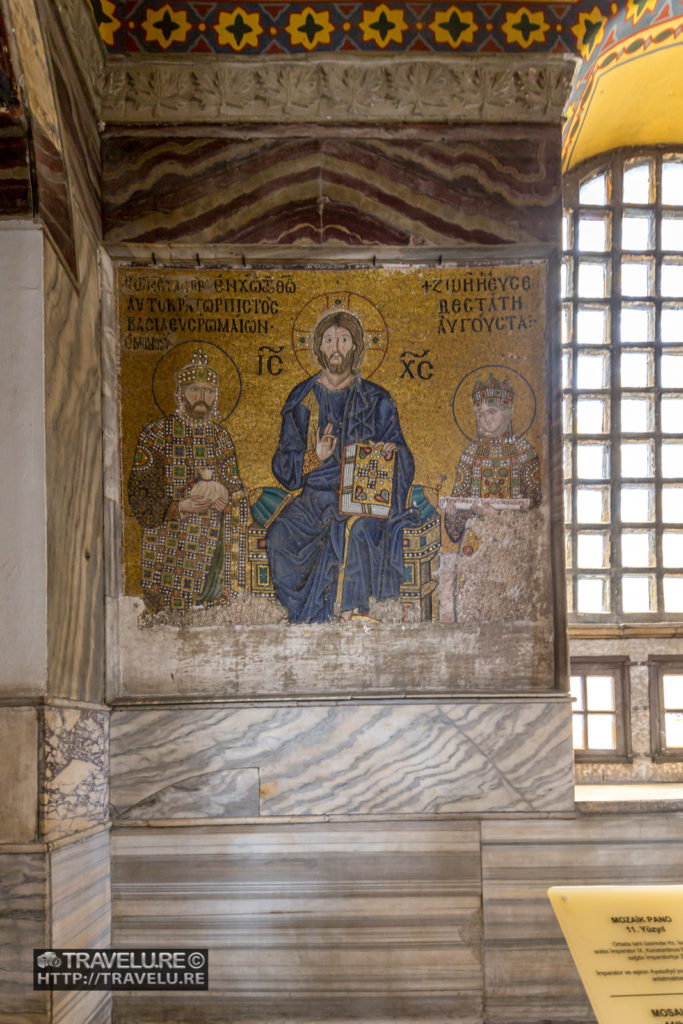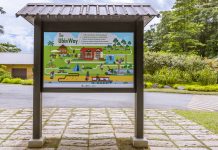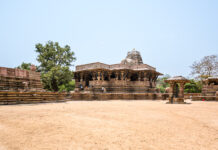Our Planet’s Landmarks Series #40
Historic Areas of Istanbul Turkey
Straddling two continents, and between two seas, Istanbul enjoys a unique position. A European and an Asian side. A natural strait – Bosphorus – separates the two. Earlier going by the names Byzantium and Constantinople, it is home to over 15 million people.

It had been the capital of the Eastern Roman Empire and Ottoman Empire. Over the centuries, this Turkish city developed a distinctive skyline. The 6th century Hagia Sophia, the 15th century Fatih Complex and Topkapi Palace, the 17th century Blue Mosque, all embellish its Eurasian character. Little wonder, UNESCO inscribed the historic areas of Istanbul (Old Istanbul) on its World Heritage Sites List.
Let’s soak in Old Istanbul
The Golden Horn is a natural estuary. It joins Bosphorus Strait where it meets the Sea of Marmara and forms a horn-shaped natural, sheltered harbour. Over the millennia, it has protected trade ships. It also defines the northern boundary of the peninsula where Old Istanbul lies. In fact, the UNESCO-listed historic areas of Istanbul is right here. In the south is the Sea of Marmara. Bosphorus to the east, and the ancient city wall built by Theodosius to the west.

As I ambled through the area, the ancient feel of the empires gone by surrounded me. The buildings and the bazaars, the streets and the surroundings, all exuded an aura of the vibrant past.
I experienced a panoramic view of old Istanbul from Galata Tower, a 14th-century heritage minaret across the Golden Horn. The waterways and the distinctive skyline merge to form a fascinating picture postcard.
To soak in the hustle and bustle of the historic precinct, I walked the famed Sultanahmet Archeological Park. Besides the Blue Mosque, Topkapi Palace, Hagia Sophia, and Basilica Cistern are the other high points of the park.

The Blue Mosque
It is a historic mosque in Istanbul, built between 1609 and 1616 CE. Its actual name is Sultan Ahmed Mosque, but the hand-painted blue tiles adorning its ceiling have earned it the sobriquet Blue Mosque. These are Iznik style tiles, created under the supervision of an Iznik Master. The lower part of the mosque sports more than 20,000 tiles with many design elements. These include over 50 varieties of tulips, many flowers, fruits, and cypresses.
Structurally unique, the mosque has five main domes, six minarets, and eight secondary domes. Hagia Sophia was the inspiration. It incorporates the Byzantine Christian and the traditional Islamic elements.

The mosque is still used for prayers. While the blue tiles within give it its name, don’t miss out on splendid stained glass artworks on the windows. There are over 200 of them here!
Topkapi Palace – The Royal Seat of Ottomans
This lavishly spread out palace was built in the 15th century. Besides housing the Ottoman sultans and their harems, it also housed their court, mint, library, treasury, and more. After the 17th century, it lost its importance as the royalty turned their attention to the newer palaces by the Bosphorus. It became a museum after 1923 when the Ottoman Empire ended.

The palace had many levels of security. Beyond the Imperial Gate lay the First Courtyard. Its entrance – the Imperial Gate – is majestic. It has calligraphic inscriptions from the Quran. This area was the parade court. Courtiers in their finery would strut around here.
From here, you make your way to the Gate of Salutation. The two towers of the gate have a conical roof. These reflect a Byzantine influence. A high-security gate, with rich decorations of religious inscriptions and monograms, allowed for only the Sultan to enter on horseback.

Crossing this gate, you enter the second courtyard. The former palace hospital, bakery, infantry quarters, stables, the imperial harem, and Divan are to the north and the kitchens to the south.
Beyond this, you enter the Gate of Felicity to get to the third courtyard.

The Heart of Topkapi Palace
This gate is true access to the inner palace. Here, I also spotted the Imperial Council and the Imperial Treasury. The Audience Chamber was Sultan’s House of Lords. And the treasury housed priceless items like a couple of gold candle stands weighing 48 kilograms each, encrusted with 6,666 cut diamonds. These were Sultan’s gift to Kaaba. Ottomans brought them back shortly before they lost control over Kaaba.
The four rooms of treasury have a collection of the rare. These include an armour of Sultan Mustafa III. It is an iron coat decorated with gold and encrusted with jewels. His gilded sword, shield, and stirrups are also on display. Another room houses the Topkapı Dagger. Its golden hilt is ornamented with three large emeralds, topped by a golden watch with an emerald lid. Diamonds and enamel cover the golden scabbard.

The Spoonmaker’s Diamond, set in silver and with two ranks with 49 cut diamonds, is yet another priceless exhibit here. This is the fourth-largest diamond in the world. The throne of Sultan Mahmud I is the centerpiece of the fourth room. This gold-plated Indian style throne is decorated with pearls and emeralds. It was a gift of the Persian ruler Nader Shah in the 18th century.
There is more, much more, in Topkapi Palace. The expanse and importance of the palace merit an entire article. I may write it another day. For now, I’ll say it is the most regal ensemble of artefacts I have ever seen, barring the Crown Jewels Vault in the Tower of London.

The magnificent Hagia Sophia
As I beat the queue and entered Hagia Sophia, my guide took off with his story. His ramblings told me Hagia Sophia had been rebuilt twice. I learnt they built it in 360 CE. The second Hagia Sophia came up in the fifth century. One can find marble block remains from this period at the museum entrance. After the fire swallowed the entire complex, the next rebuilding started in 532 CE and finished in 537 CE. This structure stands until today.

Hagia Sophia remained a church for almost 1100 years. The seat of the Orthodox Patriarch of Constantinople, it also was a principal setting for Byzantine imperial ceremonies like coronations.

After the Ottoman conquest of Constantinople in 1453, the precincts were pillaged and looted as was the custom after a victory. Soon after, Hagia Sophia was a mosque, and after 1935, turned into a museum.

Inside Hagia Sophia
The interior on this mega structure is awe-inspiring, opulent. While it is two-storeyed, the main hall has a double ceiling height. The feel within is cavernous. The hall, ante-rooms, entrance lobby, and the altar has stunning illustrations.

Hagia Sophia is also the home to the world’s first photoshopped artwork! The Empress Zoe Mosaic. She married at least three times, and hence the face of the person on the left was repeatedly repainted to depict her then-husband.

A ramp going up surprised me. Unlike today, ramps are not a common feature in heritage buildings. Our guide then threw light on the laziness of the Ottoman Emperors. They wouldn’t walk to the upper floor of Hagia Sophia. Instead, they were carried up a ramp!

Mysterious Basilica Cistern
Basilica Cistern is the largest of the underground cisterns that dot Istanbul. It supplied water to the buildings on the First Hill of Istanbul including Hagia Sophia and Topkapi Palace. Built in the 6th century, it could hold 2,800,000 cubic feet of water.

336 marble columns support the ceiling of the cistern. Most of them, not carved. One column has embossing of a Hen’s Eye, and tears. The tears are a tribute to the hundreds of slaves who died during the construction of the Basilica Cistern.
The heads of Medusa – one sideways, the other upside down – props up two pillars. The legend is, they did it to negate the power of the Gorgons’ gaze. But logic says it was to get the right height to support the pillars.

To make it a more contemporary recall for you, let me invoke Dan Brown’s bestseller Inferno (2013). The climax of the book and the movie by the same name (2016) feature the select locations of Basilica Cistern and Hagia Sophia.
The Historic Areas of Istanbul have held relevance from the 4th century until the 21st. They also feature in every list of favoured destinations of the world. It sure takes a planet’s landmark to achieve such a distinction!























Extremely beautiful pictures! No wonder a camera lens adds on the our posts and makes it an amazing read. Thank you for sharing these lovely pictures along with this informative post.
Thanks, Abhishek! Happy to know you liked the post!